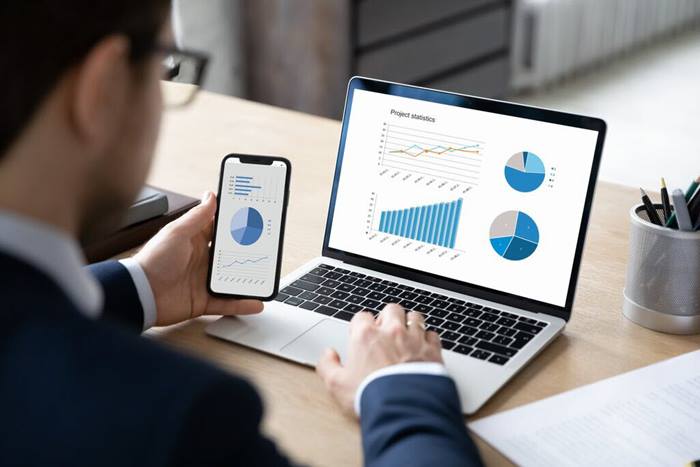















- Locations
- United States
- US Blogs
- Shifting Growth Opportunities
The writing is on the wall. The current market situation in the U.S. pharmaceutical unbranded generics market is very challenging and will spur companies to adopt new strategies. Various forces have converged to continue price deflation to unsustainable levels. Following are trends observed in IQVIA data with respect to unbranded generics and biosimilars in the U.S.
Strong unbranded generics volume, but a downward trend in value
The unbranded generics business has delivered strong prescription volume; unbranded generics accounted for 85% of all prescription volume in the country in 2021. However, those prescriptions generated only 9.5% of the industry’s total sales dollars(see Figure 1). Sales dollars peaked in 2017 and have dropped roughly 5% per month over the prior year ever since.
85.3% of prescriptions were dispensed as unbranded generics in 2021 (adjusted) but only 9.5% of dollars
Unbranded and branded generics account for 17.5% of spending in 2021

Figure 1: Unbranded generics share of prescription volume and sales dollars, 2016-2021
Source: IQVIA National Sales Perspective
Why might this be happening? Three forces appear to be converging in the “perfect storm:”
- Just three buyers control 91% of generic purchasing in the country
- The number of unbranded generic players in the U.S. market has grown by 40 over the past 5 years
- The U.S. Food and Drug Administration’s (FDA’s) Office of Generic Drugs has opened the floodgates with Abbreviated New Drug Approvals (ANDAs)
As a result, in 2021, less than a third of the approved ANDAs actually launched, given the amount of competition. There might be “room” in the market for five or six unbranded generics per molecule to be profitable, but certainly not for twice that many, as there are only so many distribution contracts to be had. That is, of course, market forces working as intended. However, in some rare cases, the price has been driven down well below the cost of goods – an obviously untenable situation except for those manufacturers prepared to take a loss just to establish themselves in the U.S. market.
What’s an unbranded generics manufacturer to do?
Some companies may elect to follow the “shrink to grow” strategy of dropping unprofitable generics products. Another strategy is to focus on the “non-commoditized” space of complex or specialty generics. These could include injectables, combination products, and transdermal products, which are harder to manufacturer and thus should face less competition.
The era of biosimilars
In contrast, the next few years will be a boom time for biosimilars. In the five years from 2019 to 2024, they’ll be responsible for estimated $104B in savings to the market (see Figure 2). This will largely be driven by the loss of exclusivity in 2023 for Humira®, the country’s leading product in terms of sales volume. This is expected to spur the approval of as many as 15 biosimilars. Then, in the next year or two, the fourth largest product, Stelara® will lose its exclusivity. Of note is the fact that both of these products are covered by pharmacy benefit plans, whereas the biologics that lost their exclusivity previously were covered by medical benefit plans.
Savings over the next five years as a result of biosimilars are projected to exceed $100 billion, though uncertainties remain
Biologic estimated savings from biosimilars at invoice prices

Figure 2: Savings from biosimilars, 2010-2024
Source: IQVIA Institute. Biosimilars in the United States 2020-20214: Competition, Savings, and Sustainability. 2020 Sept 29.
Commercial returns on producing unbranded generics in the U.S. have dropped to such a point that the current model is challenged. The degree of competition will have to level off. On the other hand, the next two years will present major opportunities for biosimilar manufacturers with the loss of marketing exclusivity for the country’s number one and number four products.
As older more traditional generics deliver fewer opportunities and are constrained by the pressures of consolidated purchasers, unbranded generic and biosimilar companies are shifting their strategies to align their portfolios for growth. We expect them to achieve this growth, creating a robust sector in the future. The consequences of these seismic shifts will be less deflation in more traditional generics and potentially even very modest increases in unbranded generic prices. There will also be growth opportunities in specialty generics and biosimilars which will capture volume before deflationary effects take hold.

The 2022 US Pharmaceutical Market: Trends, Issues, and Outlook
To learn more from Industry Expert Doug Long, watch this on demand webinar to help keep abreast of additional industry trends and forecasts vital to remain competitive in the pharmaceutical market. This session will provide analysis of the pharmaceutical market and offer predictions about what lies ahead in the coming months as the healthcare industry continues to manage the COVID-19 pandemic.




